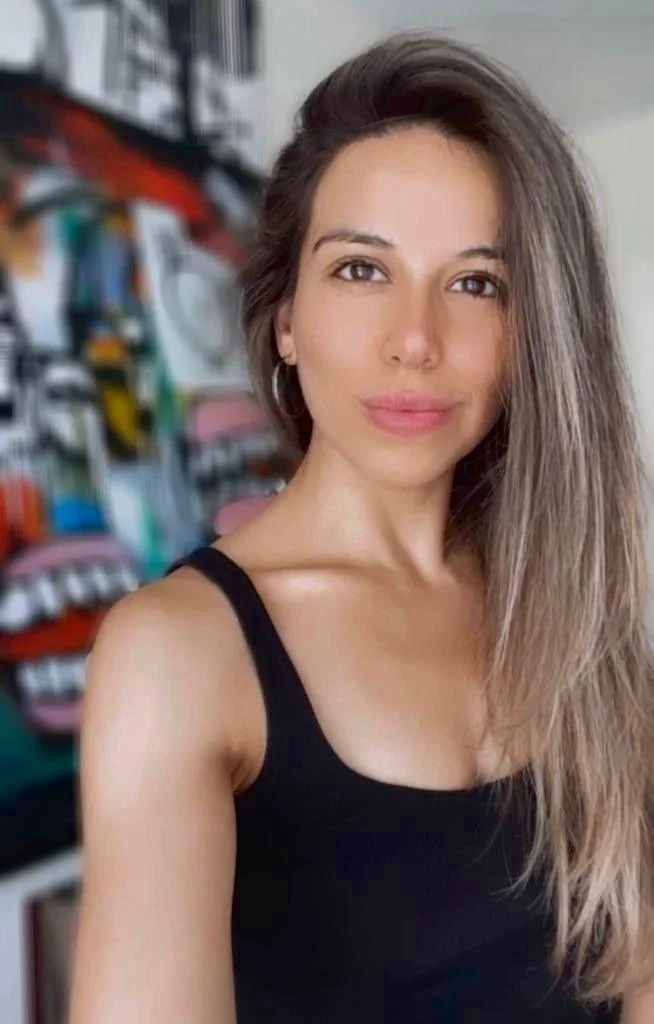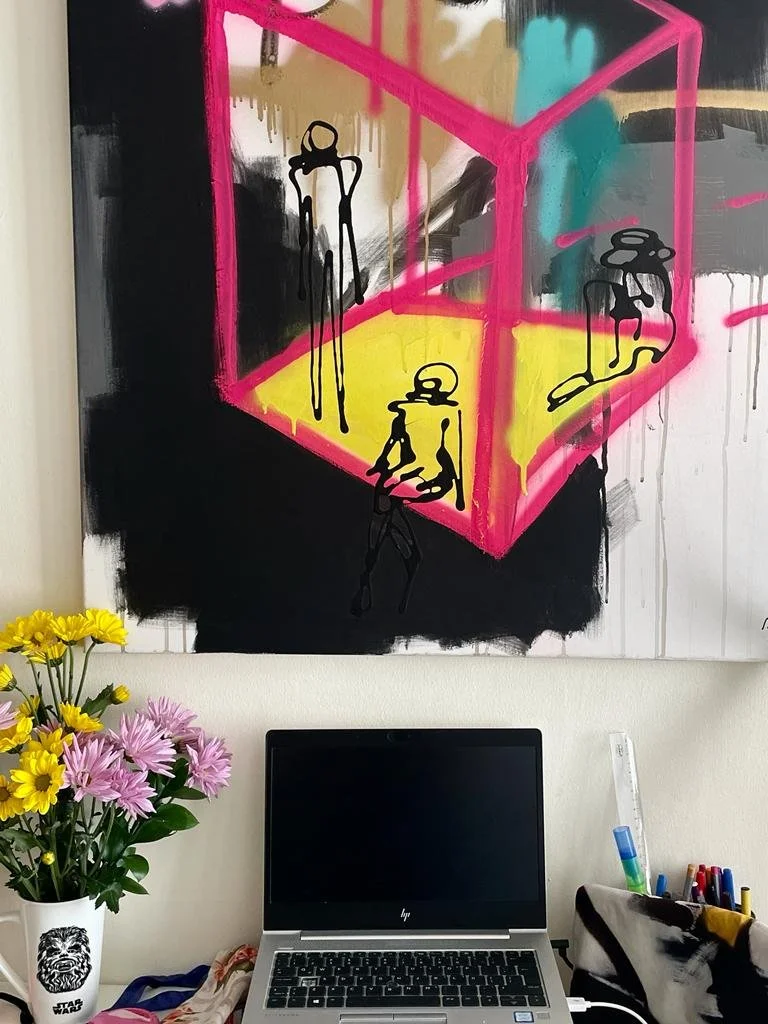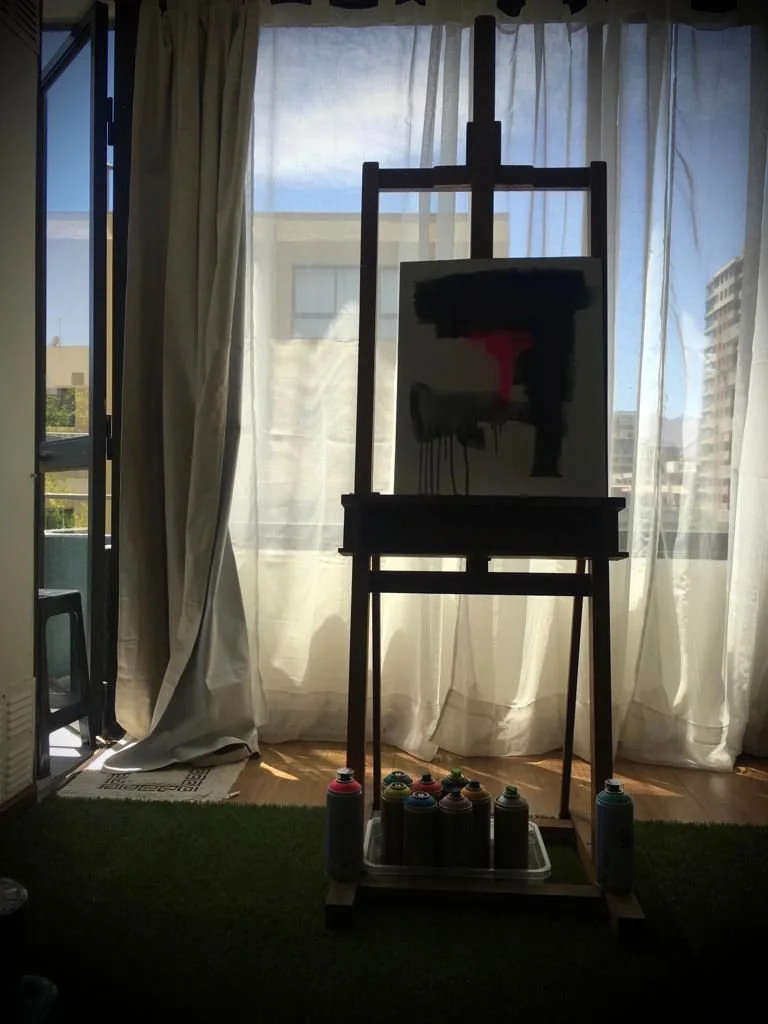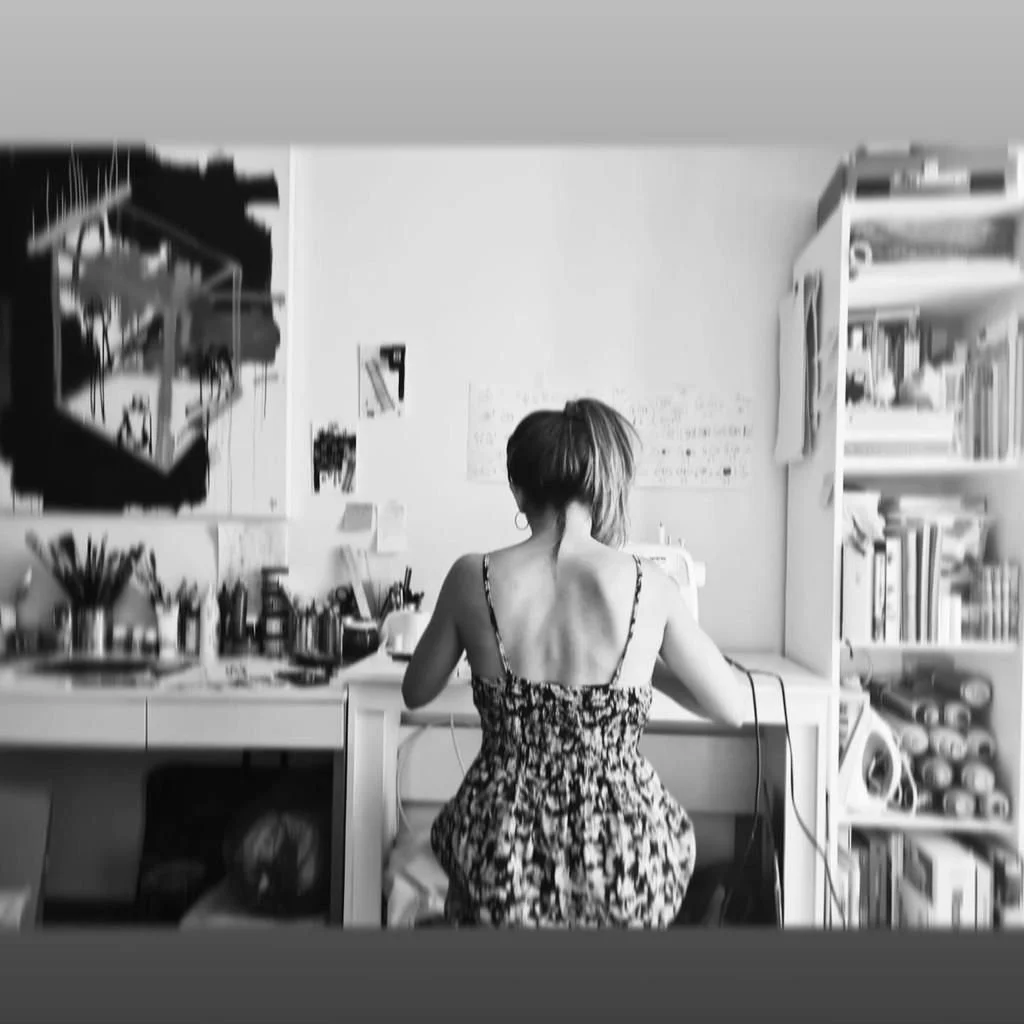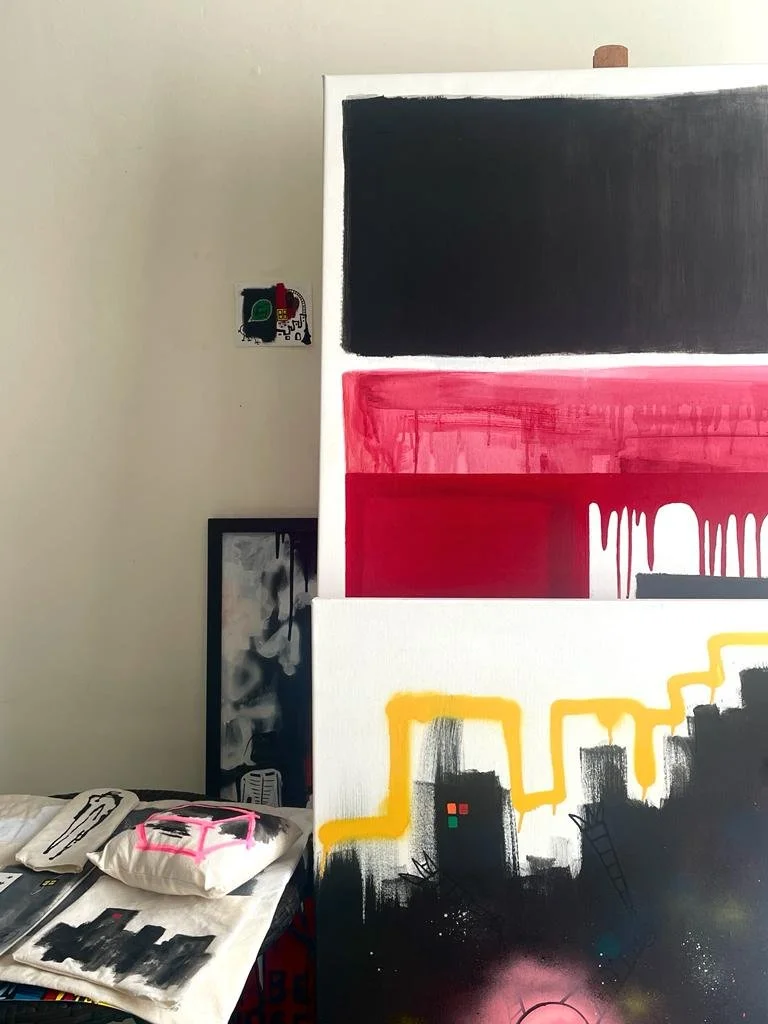Interview
Natalia Aros
Natalia graduated as a visual artist from the Pontificia Universidad Católica de Chile, having studied developmental psychology, psychoplastics, and art therapy. She has worked as an academic assistant for undergraduate and postgraduate courses at the School of Art and the School of Psychology at the Pontificia Universidad Católica de Chile.
Natalia’s main focus has been guiding art creation processes in art production workshops, guiding degree memory processes, and developing psychoplastic sessions. Prior to the art program, she studied architecture for two years. Architectural school is where she acquired her aesthetic taste and her interest in the city, public space, and the inhabitant.
Creative processes and symbolic image production are the main interests that shape Natalie’s work. In it, she represents mental images related to her everyday urban context. Free to make and unmake images, Natalia succeeds in symbolizing the fragmented and overlapping nature of the human mind, and its relationship to emotional experiences.
Natalia lived in London for a time, where she created and exhibited her work. She currently lives and works in Santiago de Chile.
What is your background and how did you start your journey in the art world?
“I’ve always relied on curiosity, observation, and experimentation to unveil the world around me. As a child, I always liked to paint and draw. At school, the world of the abstract and experimental called my attention, so mathematics, plastic arts, and physics became my favorite subjects. On weekends, I would go from school to the University of Santiago de Chile to study experimental physics.
I went on to study architecture for two years. During my studies, I discovered that my vision of the world was more linked to an aesthetic sensibility and the expression of ideas and emotions. It was then that I decided to study art at the Pontificia Universidad Católica de Chile. At PUC, the relationship between art and psychology began to attract my attention; how the image is intimately linked to the creator and their context. Also, how the psyche impacts on visual creation and, in turn, how the image leaves traces in the psyche. And so, I studied developmental psychology at PUC.
Motivated by this interest, once I finished my degree, I continued my studies in psychoplastics and art therapy. Both disciplines use different means of plastic expression as a method of revelation and construction of the psychological.”
What does your work aim to say? Does it comment on any current social or political issues?
“My artworks seek to represent the street, the urban, the city, as well as be a metaphor for the marginal, the hidden, what is erased, the ephemeral and the personal internal dialogue.
I do this through approaching the aesthetics of street art as a pictorial resource. Images that arise from the unconscious are expressed through different plastic resources such as painting of layer upon layer, covering, overlapping, and revealing certain parts of the image.”
Which current art world trends are you following?
“My visual references have been street graffiti, street art, graffiti, post modern art, and spatial interventions.
Likewise, my pictorial work has been influenced by Jungian psychology and by various international and Chilean visual artists such as Jean-Michel Basquiat, Mark Rothko, Roberto Matta, Jackson Pollock, José Balmes, Willem de Kooning, Robert Rauschenberg and Banksy, among others.
From my references, I tend to observe and learn from the painting, the stroke and the materiality. Lately, I’ve been searching for new material forms of expression such as textile art, another current reference of artistic tendency.”
“I have several favorite works of art because my interest is in the artist’s creation, materiality, color, composition, and more.
I’m also interested in the metamorphosis of his own work as it changes over time.”
Do you plan your work in advance, or is it improvisation?
“My process consists of allowing the stream of consciousness to flow freely and spontaneously through the narrative of the internal monologue, where the painting flows in colors, shapes, lines, and compositions that dialogue with each other. When an image spontaneously appears fully formed in my mind, I try to transfer it quickly to canvas or paper before it evaporates.
There are times when I create small paintings on lightweight paper and then later use them in a larger format. However, when transferring the image to a larger size, there are always quite a few changes in the tools and materials I use, and often modifications arise out of the blue.”
What process, materials, techniques, etc., do you use to create your artwork?
“I use everything from graffiti and street graffiti tools such as spray paint, enamel, wall paste, latex and markers, to traditional art materials such as acrylic, oil pastels, dry pastels, charcoal, and graphite pencil.
The use of mixed techniques and materials allows me to explore different ways to express emotions, thoughts, and ideas, where dripping paint, flat fields of solid color, graphic drawings, and fluid forms develop the final composition that reveals the psyche of the image.
When I lived in London, I started to use embroidery frames as a structure for painting, which opened up a new way of working. Thread and colored pieces of cloth were integrated as textile techniques in dialogue with painting.”
What does your art mean to you?
“My art is the purest form of my self-expression, shown through plastic. It is the way in which I share my inner world with the outside world. The accumulation of emotions, images, and colors is my interpretation of the external world based on my personal perspective and sensibility.
Likewise, it’s a creative and particular reinterpretation of the city, and of the human being through the walls of the street and the information it delivers. It is to be appreciated as a dialogue between different actors who scratch and erase, as a metaphor of what happens between the unconscious and the conscious; where information overlaps, hides and is unveiled between layers and layers of knowledge of our own human experience.”
What is your favorite artwork and why?
“I have several favorite works of art by fellow painters. Generally, they stand out for the use of materials. For example, Chilean painter, Roberto Matta uses glazes to create layers of colors. The conformation of the image and the creation of new worlds makes several of his paintings my favorites.
Robert Rauschenberg’s works have a mix of strong overlapping colors, materials, and images. Likewise, Mark Rothko’s use of color and image configuration. With Willem de Kooning’s work, it is the graphic and fluid movement in line drawing.
From my own creations, Grito and Tres Cuerpos—both of which can be seen below—are my two favorite works because of the combination of strokes, colors, and use of material. However, I have a special appreciation for Grito, as it was through this piece that I became known on different media platforms and exhibitions.”
Have you had any noteworthy exhibitions you'd like to share?
“One of the exhibitions I’d like to mention is EARTH, Creatividà & Sostenibilità which took place in 2017 at the Biennale of Contemporary Art in Florence, Italy. You can read about it here.
I also held a solo exhibition, Paisaje Urbano, in the same year at Casa del Arte Diego Rivera, in Puerto Montt, Chile.
Both are important to me because of the impact they had on the media, and the diffusion my artwork got.”

